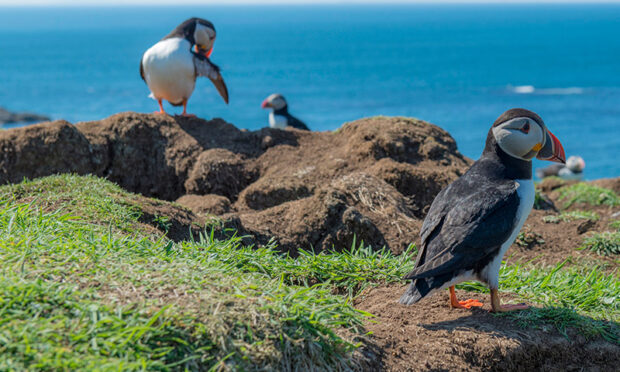Tour operators working on the west coast have said they will no longer land on Lunga or the Dutchman’s Cap for the remainder of the season due to bird flu.
Operators Turus Mara and Staffa Tours, who both visit the Treshnish islands, said from Monday until the end of the season all landing trips have been cancelled.
The firms will still operate to the islands, but as boat trips only.
The eight Treshnish Isles are about a mile-and-a-half west of Mull and extend along a northeast-southwest axis for a distance of seven miles.
‘Landings suspended’
A spokesman for Turus Mara – who work out of both Oban and Ulva Ferry, said: “Following advice from Scotland’s nature agency, NatureScot, we have taken the difficult decision to suspend all landings on the Treshnish Isles for the remainder of the 2022 seabird breeding season from July 18.
“This is in order to play our part in helping limit the spread and effect of highly pathogenic avian influenza (HPAI), a devastating disease in birds that has been identified increasingly near our area.”
Following advice from @nature_scot we have taken the difficult decision to suspend all landings on the Treshnish Isles from Monday 18th July.
This is in order to play our part in helping limit the spread and effect of Highly Pathogenic Avian Influenza.
— Turus Mara (@Turus_Mara) July 13, 2022
Turus Mara said it “remained committed to delivering the best seabird and wildlife cruise-tours” and visitors will still be able to enjoy the Treshnish Isles “summer seabird spectacle” from its boats – without landing.
The spokesman continued: “This also allows time for a more flexible approach to viewing other parts of the stunning Loch Na Keal National Scenic Area through which all our trips run.
‘Extremely challenging’
“This is an extremely challenging and disappointing situation for all and we really appreciate your patience and understanding while we rearrange things as best we can.”
A spokesman for fellow tour operator Staff Tours, who work out of Oban, Tobermory, south Mull and Iona said: “In collaboration with NatureScot and the Hebridean Trust we feel it’s best to suspend all landings for 2022 to minimise the spread and safeguard the health of the nesting birds.
“We understand that this will disappoint some of our future customers this year.
Some fantastic sightings of Bottlenose Dolphins on the trips over the last few days.
Our passengers on the Treshnish / Staffa wildlife trip got a second showing of them as they returned back to Tobermory! https://t.co/hwjeGgLlbF
— Staffa Tours (@StaffaTours) April 22, 2019
“For the remainder of this season we will be enjoying the views of the islands and it’s seabirds from the comfort of our modern tour boats. At this time Staffa landings are unaffected.
“Having operated tours to the Treshnish Isles for more than 30 years, we endeavour to give our beloved seabirds the best possible chance of survival by limiting the spread of H5N1 (bird flu) and ensuring they will be there to visit in the future.”
What is so special about the Treshnish Isles?
The uninhabited islands have been landmarks for travellers through the Hebrides for at least 1,000 years.
The names of some of the islands still reflect their importance to the Vikings who once ruled in the Hebrides.
The larger Treshnish islands are Cairn na Burgh Beg, Fladda, Lunga, Bac Mòr and Bac Beag and there are several other smaller islands in between.
Hill forts, medieval chapels and castles prove that humans were once permanently living on these remote and unsheltered islands.
Year-round occupation on Lunga ended in 1824 when islander Donald Campbell and his family left the island.

Conversation